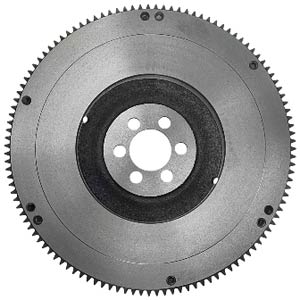Here’s the scenario: Your customer drops off her car for a clutch replacement. As a matter of course, you have the flywheel resurfaced prior to installing the new clutch; all seems well when the customer drives away. Later that month, the customer returns, complaining of clutch chatter. The assumption might be a defective or incorrectly installed clutch, but the culprit may be that resurfaced flywheel.
 "Hot spots" or hard spots on the flywheel commonly develop as the clutch nears the end of its service life, as more friction-generated heat is created when the clutch is engaged. That heat affects the flywheel, creating areas that are harder, more thermally stressed or warped.
"Hot spots" or hard spots on the flywheel commonly develop as the clutch nears the end of its service life, as more friction-generated heat is created when the clutch is engaged. That heat affects the flywheel, creating areas that are harder, more thermally stressed or warped.
Having the flywheel resurfaced may alleviate warping, but it doesn’t remove hot spots that are "baked" into it. Clutch chatter manifests itself when its friction material encounters the flywheel’s varied surface hardness rates, eventually creating high and low spots due to the different wear rate of the hot spots.
Severely hot-spotted flywheels cannot be machined to alleviate the condition; they must be replaced with a new one. Bottom line: Since resurfacing flywheels alone result in unwanted comebacks, it is critical to service the whole system. So, when installing a new ACDelco clutch kit, be sure to also install a new ACDelco flywheel.
ACDelco is a great resource for new flywheels, with about 120 part numbers that cover approximately 90 percent of the market for domestic and import vehicles.
Courtesy of ACDelco.
ACDelco markets quality parts for Ford, Chrysler, Toyota, Nissan, Honda, GM and most vehicles on the road today. To find an ACDelco parts retailer near you, visit www.acdelco.com or call 1-800-ACDelco.













